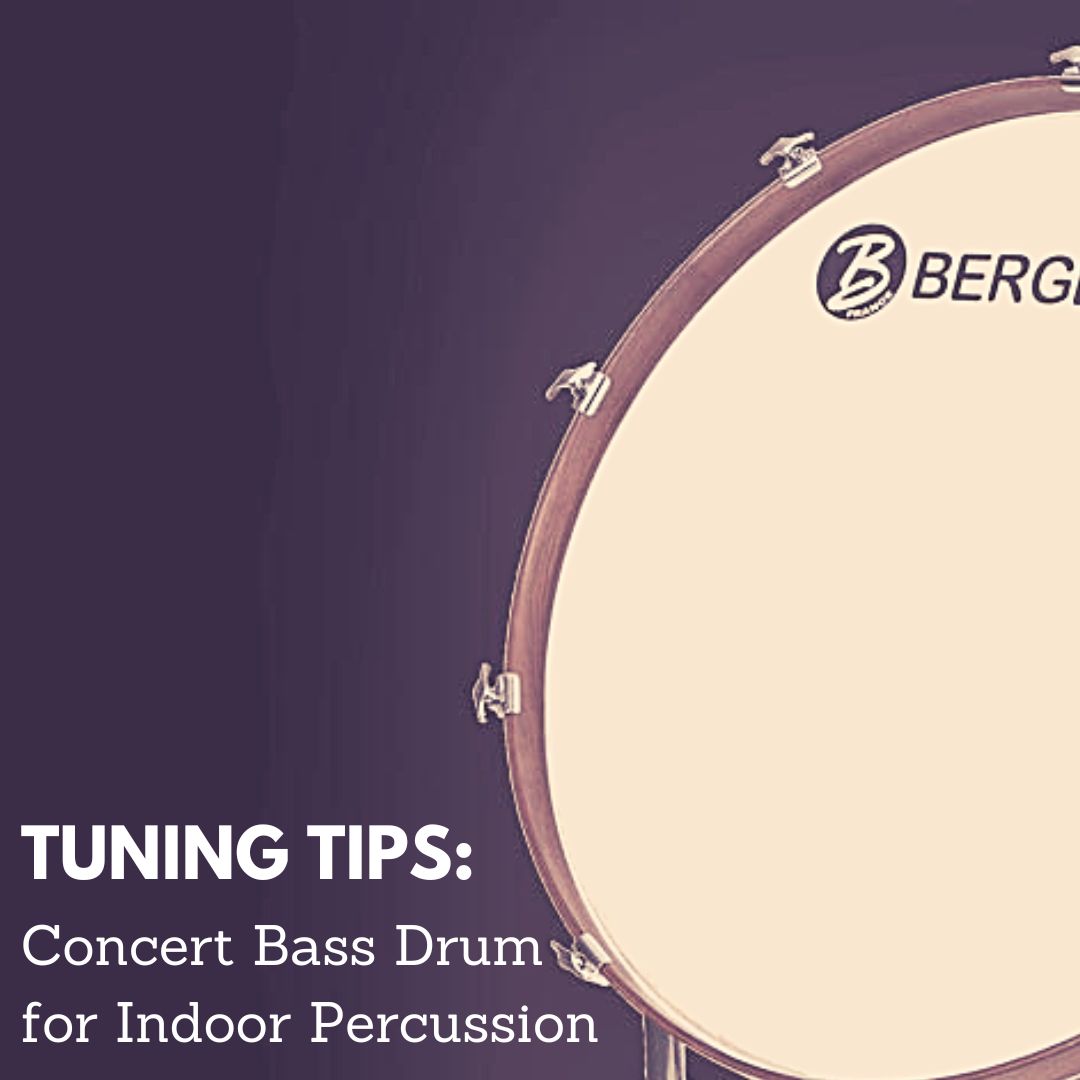Get Ready for Some Controversy: Concert Bass Drum Tuning
As with many things in percussion, tuning drums is a very personal thing that is often guided by preferences picked up in past performance and teaching experiences. This has never been more true than in how a group will tune their concert bass drum and this is often overlooked when preparing for the upcoming season. We thought we would offer a few good ways to tune your concert bass drums in this week’s blog. Before we dive into the various tuning methods we suggest you try, let’s talk about the many things that will affect how you might ultimately find your preferred sound.
What sort of things will affect the sound of my drum?
Depth/Diameter
The diameter and depth of your drum will definitely play a large role in ultimately finding the sound that you prefer. If you have a 32″ x 16″ drum you can’t expect it to have the same full, deep sound that a 40″ x 22″ drum will have. However, you can still find a nice low sound that will work best for you drum. When it comes to the depth and diameter of your drum, it is important to keep your expectations relative to those measurements. When looking for a good fundamental tone, the diameter will ultimately set the limits on what you can do.
Shell Type
The three most popular wood for concert bass drum shells are Mahogany, Maple, and Kapur. Kapur wood is most often used in entry-level drums but shares many characteristics with Mahogany and is very durable. Maple is very popular in mid to high end concert bass drums. Maple is well known for having a balanced volume and warm sound. Mahogany is by far the most popular choice of wood for a concert bass drum shell. The softness of Mahogany allows for the warm, low tones that are so characteristic of these drums.
Head Choice
Again there are many different directions you could go with head choice. You may want to consider using a thicker head on the batter side and a thinner head on your resonant side, as this gives you increased durability and overtone control. Some good combinations for this would be something like you see below:
Batter Head Resonant Head
Remo Emperor Renaissance Remo Ambassador Renaissance
Evans Strata 1400 w/Power Dot Evans Strata 1000
What are some good ways to tune my drum?
While there are many different ways to approach we want to focus on three of the more popular methods used for tuning your concert bass drum for the indoor percussion season. Each will have their advantages or disadvantages but it is important to keep in mind the size and make of your drum when trying on of these tuning methods. We suggest no matter what method you use, tune it up close and have a student play it while you stand back listen for the overall sound. We also suggest not using any sort of towel or dampening method in the initial process, but rather get a feel for the natural sound of the drum first.
Both Heads Same Pitch
This approach for tuning is exactly like it sounds. Tune both sides of the drum to the same pitch. We suggest trying to get the drum to either C, C#, D, Eb and see which one you feel works best for you and your set-up. This method is particular great for giving maximum resonance and long decay and is particularly great for larger 40″ drums or 36″ drums that are 22″+ inches in depth. It is worth noting this tuning method will sound best when played in the center of the drum as well.
Batter Head Lower
Another popular method for tuning the concert bass drum is tuning the batter head lower than the resonant head. With this tuning approach, you want to tune the batter head to it lowest possible pure tone, meaning that when struck you don’t hear any rattling of the head or paper like sounds. After find this pitch, you will want to tune the resonant head anywhere from a Major 2nd to Major 3rd interval above the batter head. This will produce a low fundamental tone when struck but will have a faster decay and less sustain. Tuning with this method is great for 36″ drums especially if you are using thinner heads on both sides such as the Ambassador Fiberskyn Heads.
Resonant Head Lower
This is a less popular option but is the exact opposite of tuning the previous method and you will tune the resonant head to it’s lowest pure tone and then tune the batter head a Major 2nd to Major 3rd interval above the resonant head. This will give a more punchy, short sound while give a low tone because of the reverse tuning. We would suggest you try this type of tuning method for smaller 36″ or 32″ drums, especially if using a thicker head on the batter side.
Which is the best for me?
Ultimately you may need to dedicate some time during rehearsal to finding out what tuning method will work best for you and your equipment. Of course there are other things to keep in mind like the type of music you are playing, how often the drum is played, and your performance venues. We suggest picking one method and going with that for a week to see how it fits in with your overall sound, especially if it is something different than what you normally do. That will give you and your staff time to determine if it is working out for you.
Lastly, keep in mind that if you aren’t getting the sound you desire and haven’t changed heads in a while it may be time to explore some new options. Give us a call and we can help find the right heads for your drum. Happy tuning!


No Comments